It was a peaceful wintertime night in the English village of Cley next the Sea, population 400 2014 was simply one week old and everybody was just coming back into the swing of post-Christmas living. Relaxed. Peaceful. Up until a group of geese removed an US Air Force helicopter in their yard.
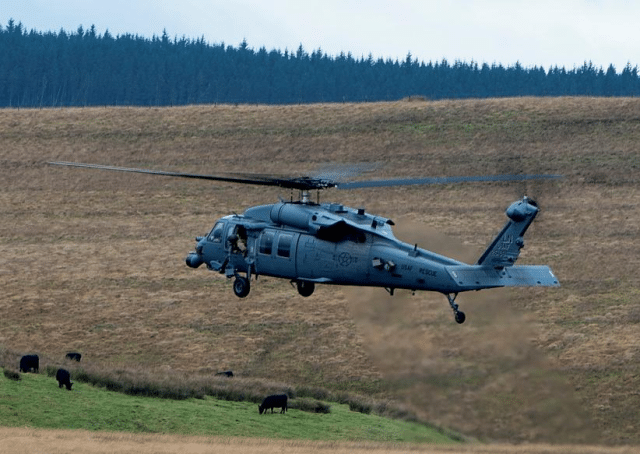
The helicopter belonged to a two-aircraft development on a training objective, two Sikorsky HH- 60 G helicopters better called Pave Hawks. It was a workhorse of the US Air Force, being used considering that 1982 and utilised in nearly every military procedure in the stepping in years. While the Pave Hawk is currently being eliminated in favour of the Cheerful Environment-friendly II, the United States Flying force alone still runs 99 Pave Hawks.
A crucial factor for this is that the Pave Hawk is designed to go locations other aircraft will not. It flies low, below radar coverage, hugging the surface in what’s understood in the military as nap-of-the-earth trip. The positive infrared system makes them specifically well suited for night-time low-level personnel recuperation procedures.
This particular Pave Hawk, tail number 88 – 26109, was assigned to the 56 th Rescue Squadron, operating out of RAF Lakenheath as part of the United States Air Forces in Europe (USAFE)’s 48 th Fighter Wing. The mission that night, the 7 th of January 2014, was for the two Pave Hawks to fly in development for a training situation saving a downed F- 16 pilot in the dark.
The pilot of the problem helicopter and the co-pilot of the lead helicopter established the mission strategy the day previously. All staff participants would put on night-vision safety glasses. They would certainly leave from RAF Lakenheath an hour after sunset and fly around 36 nautical miles to a factor south of Blakeney. There, they would certainly orbit, confirm the status of the hypothetical downed pilot and conduct a hazard analysis. Both helicopters would certainly stay in development and fly low-level for about 3 and a fifty percent maritime miles to a landing area near the village of Salthouse, a website often utilized for training missions. At such reduced elevations and at night, their alternatives were limited. The intended transmitting needed to prevent challenges, air traffic and regional noise-restricted locations.
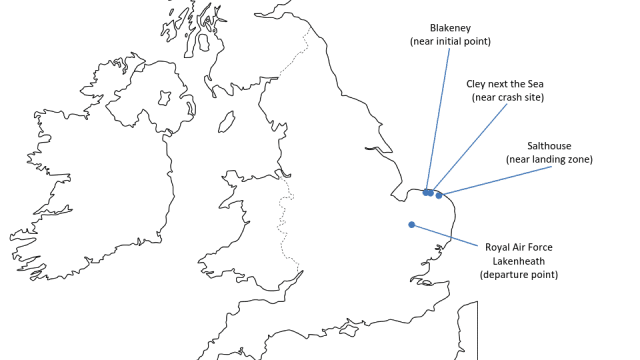
The objective strategy abided by all operational demands and was authorized.
That exact same day, the day before the accident, the Wild animals Trust counted a flock of some 400 geese in addition to other birds roosting in the location.
The Blakeney Point Nature Book is a well-known habitat for huge flocks of migratory birds and is marked as avoidance area: “prevent by 500 feet or 2 maritime miles for flying options”. The UK Military Low Flying Manual suggests that aircrew must cross shorelines at right angles and over 500 feet over ground level to avoid bird strikes. Nonetheless, this mission was a nighttime tactical low-level formation, meant to be flown under the cover of darkness and required flying listed below 500 feet.
A month earlier, in December 2013, a storm surge had actually swamped the seaside marshes, consisting of Blakeney Book. Numerous groups of birds had moved southeast to roost on drier ground.
The crew had access to bird task maps throughout preparation. The December map showed modest bird activity west of the landing area at dusk. The January map, launched the day of the training objective, suggested a low-level location of bird task over the Cley Marshes. The crew had access to the maps for reference during mission planning. The maps suggested a location of modest bird activity at sundown (defined as one hour before and after sundown) to the west of the recommended touchdown zone. As the goal left after sundown and would arrive at the landing zone an hour after dusk had finished, this risk was considered mitigated.
The key point: All called for treatments for assessing dangers and advantages were adhered to.
On the day of the crash, the Wildlife Count on counted zero geese.
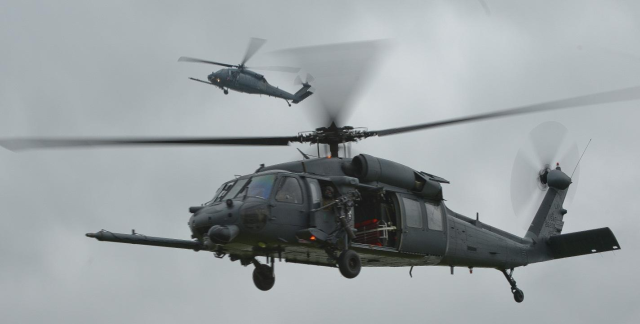
The two-aircraft development left at 17: 33: 90 minutes after sundown and half an hour after completion of sundown, half an hour after the modest sunset bird risk caution had actually run out. The helicopters flew north to begin their simulated mission to rescue the theoretical downed F- 16 pilot under the cover of darkness.
En route to the very first point, they conducted simulated hazard countermeasures. The helicopters came to the very first point 25 minutes right into the flight and began a left orbit, mimicing an examine the downed pilot’s condition.
High winds near the preliminary holding point, south of Blakeney, triggered the development to drift north in the direction of the Blakeney Factor Nature Get. Blakeney Book is a marked no-fly location and they were coming close to the areas noted for modest and severe bird dangers. The training profile meant that they were flying low, just 110 feet over ground level, which meant they were at danger of triggering a noise disturbance if they got also close to populated areas.
The lead helicopter pilot moved the orbit 1 3 miles to the north, establishing a new “first factor” closer to the coast. This maintained them clear of Blakeney Get and the well-known bird-hazard area. The new route kept them in a location marked with a “low” bird danger ranking, but likewise overlooked Cley Marsh, part of a protected wild animals area.
They reached the brand-new initial factor and completed 2 complete left orbits. Then they left the orbits to fly eastern at 100 feet over ground degree at 110 knots showed airspeed. Both helicopters kept a 0. 3 nautical mile separation, with the mishap helicopter positioned behind and to the left of the lead.
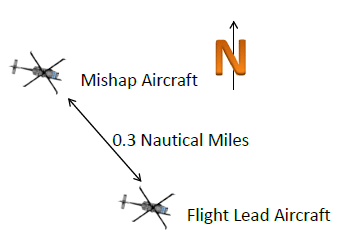
As they approached Cley Marsh, a flock of geese took off, most likely surprised by the noise of the engines. Within a minute, the birds had climbed to a height of 110 feet.
The Pave Hawk in the flight lead position, still regarding 0. 3 miles ahead, did not see the geese whatsoever. But behind them, the rising geese hit the various other helicopter. That kind of goose weighs 6 to 12 pounds. At the very least 3 crashed via the windscreen and right into the cabin, knocking the pilot and co-pilot unconscious.
A minimum of one goose struck the artilleryman outdoors doorway, making the gunner unconscious. One more goose collapsed right into the nose of the helicopter, disabling the Trim and Flight Course Stablizing systems. The Flight Path Stablizing system wets modifications in pitch, roll, and yaw to maintain the airplane stable in flight. Both of these elements belong to the autopilot. With the autopilot handicapped, the stick fell to the left.
Now, the Pave Hawk was in an intensely hazardous state: just 110 feet in the air with the autopilot disabled and both pilots unconscious. It started to bank left until it struck a crucial point and shed all upright lift.
The only member of the staff who was still mindful was the flight engineer, who most likely never ever even realised what was going on. The report grimly keeps in mind that it takes 3 4 secs for a human to perceive and process a sensory input.
Three secs elapsed from bird strike to the crash.
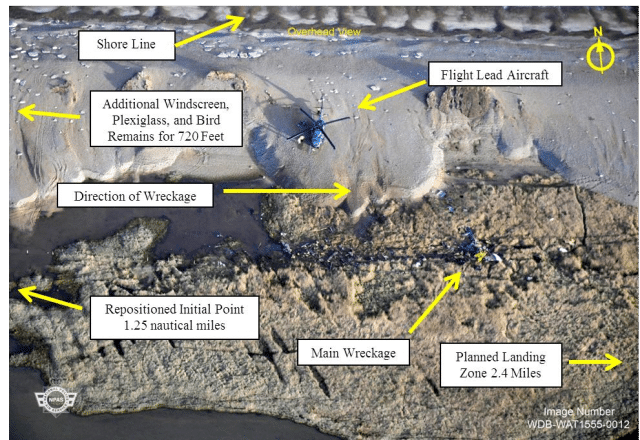
The Pave Hawk was damaged on influence, eliminating all 4 team participants.
All of the staff were wearing complete helmets which were designed to endure a force of 150 Gs. All of the safety helmets were split from the force of the impact. Plumes were discovered inside and beyond the helmets.
The record keeps in mind that a slightly second-rate goose, weighing regarding 7 5 pounds, would impact with, as a strangely certain contrast point, 53 times the kinetic power of a baseball relocating at 100 miles per hour. The geese exceeded the design tolerance of both the windscreen and the helmets, supplying over 300 Gs of force on effect.
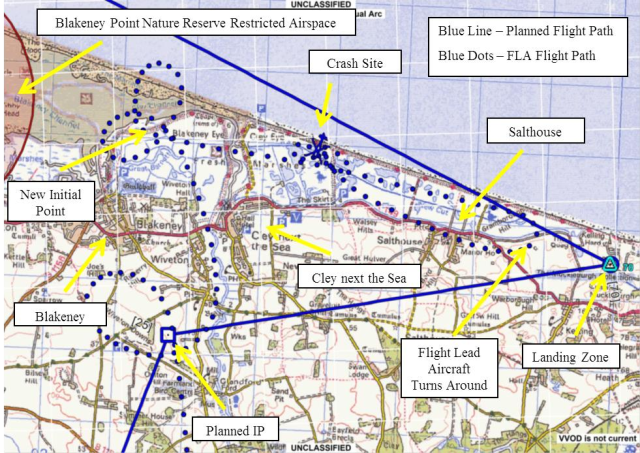
The United States Flying Force Airplane Mishap Examination Board inevitably wrapped up that the accident was caused by multiple bird strikes– however used no contributing factors that can have minimized the risk. They found no proof that the goal preparation or supervision of the planning added to the mishap.
The staff were oriented on the bird task in the locations, with updated records of bird task in the area. These referenced enhanced bird activity at sunset, yet as they were operating after sundown, there was no factor to consider this a problem. The night vision safety glasses limited the crews’ line of vision, which might have quit them from seeing the geese taking flight. But after that, it’s impossible to say that the geese would have shown up by the nude eye in the dark, let alone whether there was time to do anything regarding them.
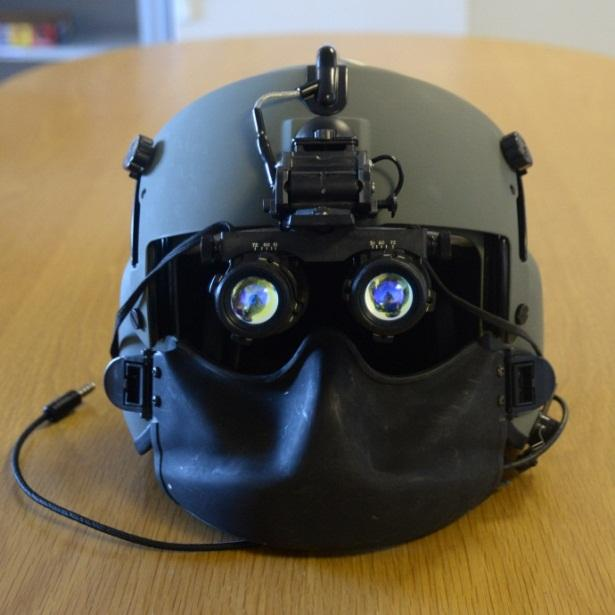
It’s a ruthless presentation of simply exactly how lethal a bird strike can be, damaging 4 lives and a $ 40 million aircraft in seconds. Inevitably, the Flying force can only wish it does not happen once again.